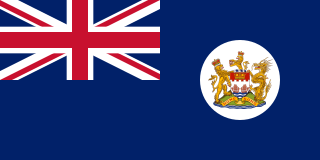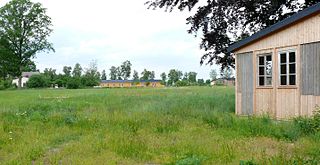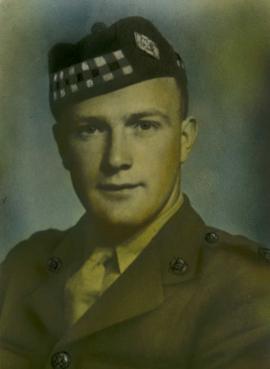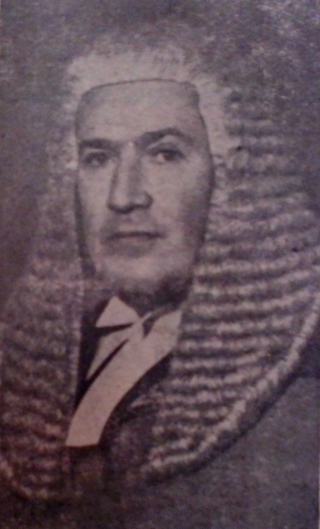
The Battle of Hong Kong,also known as the Defence of Hong Kong and the Fall of Hong Kong,was one of the first battles of the Pacific War in World War II. On the same morning as the attack on Pearl Harbor,forces of the Empire of Japan attacked the British Crown colony of Hong Kong around the same time that Japan declared war on Great Britain. The Hong Kong garrison consisted of British,Indian and Canadian units,also the Auxiliary Defence Units and Hong Kong Volunteer Defence Corps (HKVDC).

British Forces Overseas Hong Kong comprised the elements of the British Army,Royal Navy and Royal Air Force stationed in British Hong Kong. The Governor of Hong Kong also assumed the position of the commander-in-chief of the forces and the Commander British Forces in Hong Kong took charge of the daily deployment of the troops. Much of the British military left prior to the handover of Hong Kong to China in 1997. The present article focuses mainly on the British garrison in Hong Kong in the post Second World War era. For more information concerning the British garrison during the Second World War and earlier,see the Battle of Hong Kong.
The British Army Aid Group (B.A.A.G.) was a para-military organisation for British and Allied forces in southern China during the Second World War. The B.A.A.G. was officially classified in the British Army's order of battle as an MI9 unit that was responsible for assisting prisoners of war and internees to escape from the Imperial Japanese Army's camps.

The Imperial Japanese occupation of Hong Kong began when the governor of Hong Kong,Sir Mark Young,surrendered the British Crown colony of Hong Kong to the Empire of Japan on 25 December 1941. His surrender occurred after 18 days of fierce fighting against the Japanese forces that invaded the territory. The occupation lasted for three years and eight months until Japan surrendered at the end of the Second World War. The length of the period later became a metonym of the occupation.

Sir Franklin Charles Gimson was a British colonial administrator who served as Governor of Singapore from 1946 to 1952.
South Asians are part of the Hong Kong society. As of the 2021 by-census,there were at least 101,969 persons of South Asian descent in Hong Kong. Many trace their roots in Hong Kong as far back as when the Indian subcontinent was still under British colonial rule and as a legacy of the British Empire,their nationality issues remain largely unsettled. However,recently an increasing number of them have acquired Chinese nationality.

Sai Wan War Cemetery is a military cemetery located in Chai Wan,Hong Kong which was built in 1946. The cemetery was created to commemorate soldiers of Hong Kong Garrison who perished during the Second World War. The cemetery also contains 12 World War I burials. A total of 1,528 soldiers,mainly from the Commonwealth,are commemorated here. Most of the remaining burials are located at the Stanley Military Cemetery.

Stalag X-B was a World War II German prisoner-of-war camp located near Sandbostel in Lower Saxony in north-western Germany. Between 1939 and 1945 several hundred thousand POWs of 55 nations passed through the camp. Due to the bad conditions in which they were housed,thousands died there of hunger,disease,or were killed by the guards. Estimates of the number of dead range from 8,000 to 50,000.

John Kelburne Lawson was a Canadian military officer who served as commander of the West Brigade during the Battle of Hong Kong. A brigadier,he was the most senior officer to be killed in action during the battle.

"C" Force was the Canadian military contingent involved in the Battle of Hong Kong,in December 1941. Members of this force were the first Canadian soldiers to see action against Japan in World War II. The major Canadian units involved in the defence of Hong Kong were the Winnipeg Grenadiers and the Royal Rifles of Canada. In addition to this the Canadians provided a Brigade HQ.

Batu Lintang camp at Kuching,Sarawak on the island of Borneo was a Japanese-run internment camp during the Second World War. It was unusual in that it housed both Allied prisoners of war (POWs) and civilian internees. The camp,which operated from March 1942 until the liberation of the camp in September 1945,was housed in buildings that were originally British Indian Army barracks. The original area was extended by the Japanese,until it covered about 50 acres. The camp population fluctuated,due to movement of prisoners between camps in Borneo,and as a result of the deaths of the prisoners. It had a maximum population of some 3,000 prisoners.

Stanley Internment Camp was a civilian internment camp in Hong Kong during the Second World War. Located in Stanley,on the southern end of Hong Kong Island,it was used by the Japanese imperial forces to hold non-Chinese enemy nationals after their victory in the Battle of Hong Kong in December 1941. About 2,800 men,women,and children were held at the non-segregated camp for 44 months from early January 1942 to August 1945 when Japanese forces surrendered. The camp area consisted of St Stephen's College and the grounds of Stanley Prison,excluding the prison itself.

Hong Kong Cemetery,formerly Hong Kong Cemetery and before that Hong Kong Colonial Cemetery,is one of the early Christian cemeteries in Hong Kong dating to its colonial era beginning in 1845. It is located beside the racecourse at Happy Valley,along with the Jewish Cemetery,Hindu Cemetery,Parsee Cemetery,St. Michael's Catholic Cemetery and the Muslim Cemetery.

Captain Mateen Ahmed Ansari GC of the 5th Battalion,7th Rajput Regiment,in the Indian Army during World War II,and member of the British Army Aid Group. He was awarded the George Cross posthumously. The decoration,the highest British award for bravery out of combat,was announced in a supplement to the London Gazette of 16 April 1946 as being awarded for the 'most conspicuous gallantry.'

Captain Douglas Ford,was a British Army officer of the Royal Scots and a British prisoner of war in the Second World War,who was posthumously awarded the George Cross for conspicuous gallantry. His citation was published in the London Gazette on 18 March 1946.

Shorncliffe Army Camp is a British Army installation near Cheriton in Kent,established in 1794. The camp,described as "the birthplace of the modern British Army",previously consisted of Ross Barracks,Burgoyne Barracks,Somerset Barracks,Napier Barracks,Risborough Barracks and Sir John Moore Barracks,however,due to closures,the latter is all that remains in military use.
The St. Stephen's College massacre involved a series of war crimes committed by the Imperial Japanese Army on 25 December 1941 at St Stephen's College during the Japanese occupation of Hong Kong.

Sir Alasdair Duncan Atholl MacGregor KC was a British lawyer and judge. He served as Attorney General in a number of British colonies in the early 20th century. He was Chief Justice of Hong Kong from 1933 to 1945.
Cedric Wallis was a British military officer who served as commander of the Mainland Brigade and East Brigade during the Battle of Hong Kong.
























